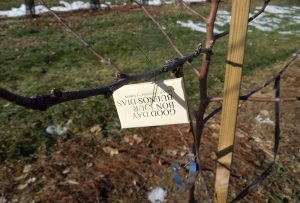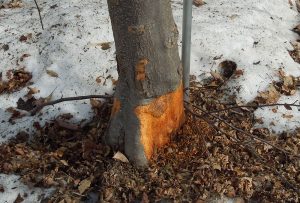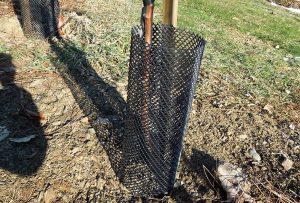Wildlife Damage
A number of wild animals will feed on trees with the potential for yield reduction or tree death. Meadow voles, deer, porcupine and sapsucking birds feed on trees and may become a nuisance to the fruit tree grower.
Voles or meadow mice girdle young trees when they feed on the lower trunk. Winter is the most likely time for vole feeding. Protect tree trunks with hardware cloth wrapped around the trunk. It should be 12-18 inches in height, but not tight against the trunk. Plastic spiral guards can also be used, but should be removed in spring since they encourage trunk borers.
Deer feed on the new shoots of fruit trees and can severely stunt trees of short stature. An 8’ fence is the most effective method of keeping deer away from fruit trees, but is also the most costly. A shorter fence encompassing the individual tree creates a physical barrier that will prevent deer from feeding on trees. Scented soaps hung from branches act as a repellent and temporarily deter feeding. Preventing deer feeding is important for young or dwarf trees which can lose most of their bearing shoots.
Porcupines damage is uncommon, but devastating when it occurs. They remove all the new shoots in a short time which weakens the tree. Repeated damage can lead to tree death. They prefer the long shoots of pear trees to other types of fruits. Protecting fruit trees from porcupines is difficult.
Sapsucking birds create numerous small holes in the upper tree trunks of fruit trees. This type of damage is usually of no consequence to the tree. However, repeated, severe attack can weaken trees.
- Bars of scented soap attached to tree branches will deter deer browsing.
- Meadow voles fees on the lower trunk can be lethal to fruit trees.
- A plastic mesh or hardware cloth guard can protect the lower tree trunk from feeding by meadow voles.



